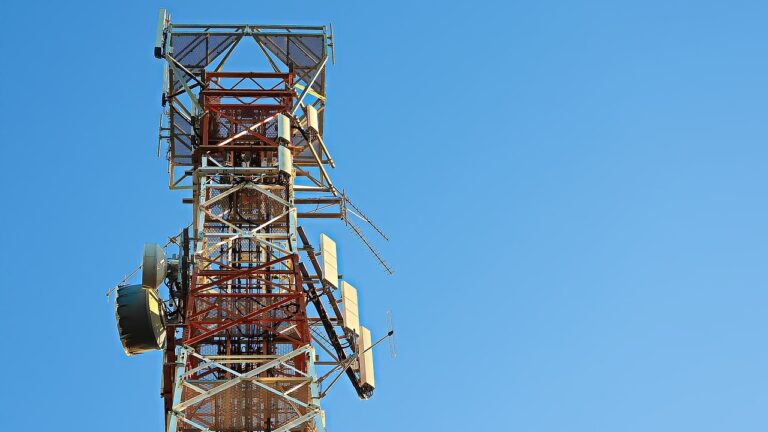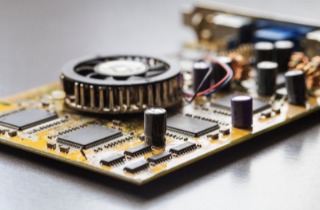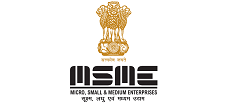The Future of Digital Transformation in the Telecom Industry
Industry Insights | 4 April 2022 | Ratna Priya
In consideration of the developing pace among industries, the telecom industry is one of the fastest emerging sectors in the internet of things due to enhanced connectivity and communication solutions. With a resemblance to many other industries, the telecom sector has spearheaded the advancement in digitization. With the developing reception of insightful correspondence frameworks, remote installation, 5G innovation, coordinated organization, just as cell phones and tablets, the Telecom IoT market is making a quick development towards advanced change. Additionally, adopting automation technology, multichannel approach and customization services is facilitating telecom operators in creating a great customer experience to enhance asset utilization.
In accordance with the estimates, the market for IoT telecom services is expected to grow at a CAGR of 43.6 per cent to USD 17.67 billion by 2021. In addition to this, we can create a fair idea about how the emerging technology in telecom has already impacted our lives in the past few years and how effectively it has transformed into one of the fastest-growing trends in terms of technical innovation.


Emerging Technology Adoption in the Telecom Industry
Leading telecom sector operators are implementing the following main measures to expand market share and improve customer experience.
NB (Narrowband IoT)
NB-IoT is a radio technology standard for low-power wide area networks (LPWAN). The 3GPP (3rd Generation Partnership Project, a collaboration between groupings of telecommunications standards bodies) has generated the following specifications:
- – The NB-IoT LPWAN solution operates on a licensed spectrum, ensuring service quality and future cooperation capabilities.
- – It’s an LTE-related technology that allows for two-way communication and is specifically built for LPWA applications.
- – NB-IoT was created to provide for more efficient communication, longer battery life for many distributed devices, and cheaper costs across a huge geographic footprint.
- – It’s used to connect many devices with modest, continuous streams of data in a wide metropolitan infrastructure at a low cost.
Wireless Payment
High tech systems have not only made our life convenient but surpassing the conventional methods, it has shifted our thought process and standard of living in our day-to-day life. There has been a great transition of payment methods facilitating high technology and wireless payment methods that includes credit cards, debit cards, key fobs, smart cards, and other devices. Devices, such as smartphones and mobile devices use technology like RFID (radio-frequency identification) or NFC (near field communication) to make secure payments are all examples of wireless payment systems.
Wireless chips placed in a mobile phone or on a payment card are used in this technology to save the user’s payment card credentials. Consumers can flap their card or portable device over a reader at a point-of-sale terminal without having to swipe or use a pin because of the embedded chip and antenna. When NFC-enabled phones are near tagged card readers or a sign at a store, the technology can also be used to convey information messages to them.
5G Technology
The 5G mobile network can link and operate machines, objects, and devices, allowing for faster speeds and more dependable connections on smartphones and other devices. It provides a new level of performance and efficiency, allowing for new user experiences and industry connections.
5G wireless technology is designed to provide multi-gigabit per second peak data speeds, ultra-low latency, greater dependability, huge network capacity, increased availability, and a more consistent user experience to a larger number of users. Higher productivity and efficiency give rise to new user experiences and industry connections.
A 5G user can utilize 5G, 4G, and Wi-Fi at the same time since 5G can connect to 4G and Wi-Fi, allowing a user to be connected to 5G New Radio (NR), LTE, or wireless technologies at the same time. More entities will be able to deploy 5G and experience the benefits of 5G technology because it will be designed for an unlicensed spectrum without requiring access to the licensed frequency.
5g is mainly categorized into three main types:
Enhanced Mobile Broadband: With faster, more uniform data rates, lower latency, and cheaper cost-per-bit, 5G not only enables smarter phones but also guides with new immersive experiences like VR and AR.
Communication is crucial to the mission: With dependable, available, low latency communications, 5G offers applications that can alter industries, including remote control of fussy infrastructure, vehicles, and medical operations.
Gigantic Internet of Things: 5G’s ability to scale down data speeds, power, and mobility to give an extremely lean/low-cost solution allows it to seamlessly connect a massive number of embedded sensors in nearly anything.
Location Tracker
The emergence of a new internet of things technology and location-based designed sensors like GPS has tremendously provided us ability to create personal security solutions with location-tracking abilities. GPS has been uniquely designed to provide location information and it is better to earlier tracking approaches in terms of providing extremely exact position information for mobile objects and humans.
Telecom operators can improve supply chain visibility, track, and monitor the whereabouts of commodities, locate workers’ locations, and promote corporate efficiency using this tracking technology. Additionally, with this, the existing user location can be also broadcasted on the cloud platform for further processing. Under any such circumstance, the cloud platform will analyze the position based on the data shared by the remote system and further will translate it into a language that can be easily understood.
Integrated Network Management
Considering the daily basis requirement, enterprises rely upon a vast telecommunication network to maintain effective and efficient communication between employees, workers, and clients. Companies can have a better insight and control expenses connected to their existing telecom network with integrated network management. The basic goal of integrated network leadership is to generate a network that is error-free and performs adequately. Integration of BSS-OSS (IT-network) fits into this strategy quite well.
Providing telecom operators with an opportunity for growth increases the scope to gain profits. Integrating IT and network services enables telecom businesses to respond to changing client expectations, which is a competitive requirement. Therefore, with reduced costs, they have opportunities to spend on distinctive talents leading them to save their efforts and money eventually.
The emergence of such phenomenal digital transformation and technical conversion in the telecom industry has remarkably changed millions of lives to carry out interaction and communication as people’s way of perception due to which accessing information will create an everlasting experience in people’s life.
Who We Are
ITOne Infotech headquartered in Pune is an entity of One Group of Companies. We are a one-stop destination for all your ITSM needs, envisioned to rank as a top managed service provider with global footprints.
Supported Industries
Address
C - 503 & 504, Pune IT Park,
34, Aundh Road, Bhau Patil Marg,
Bopodi, Pune - 411020




















